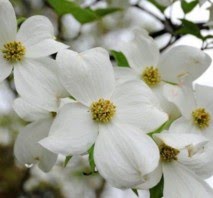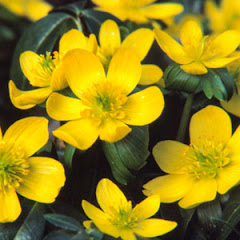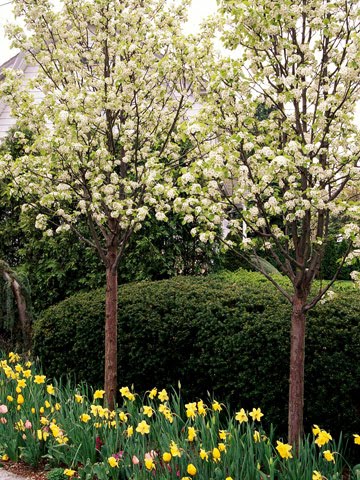As reported by the Boston Globe, "The history of Halloween," by Katharine Whittemore, on 26 October 2013 -- It’s that time of year again: Halloween, when we eat marinated carp, celebrate Martin Luther’s 95 theses, and put out bowls of butter to salve the wounds of the dead. Who doesn’t love Halloween, when we throw nuts into the fire to predict whom we’ll marry, and enter a house only after firing a shot over the roof and having the owner fire back? Forget Tootsie Rolls. Forget UNICEF boxes. Forget kids in ninja costumes. This bizarrely enigmatic, riotously evolving pagan-Christian-Celtic-American-Hollywood-hyper-retail-creepingly-global holiday is “undoubtedly the most misunderstood of festivals.”
Thursday, October 31, 2013
History of Halloween
As reported by the Boston Globe, "The history of Halloween," by Katharine Whittemore, on 26 October 2013 -- It’s that time of year again: Halloween, when we eat marinated carp, celebrate Martin Luther’s 95 theses, and put out bowls of butter to salve the wounds of the dead. Who doesn’t love Halloween, when we throw nuts into the fire to predict whom we’ll marry, and enter a house only after firing a shot over the roof and having the owner fire back? Forget Tootsie Rolls. Forget UNICEF boxes. Forget kids in ninja costumes. This bizarrely enigmatic, riotously evolving pagan-Christian-Celtic-American-Hollywood-hyper-retail-creepingly-global holiday is “undoubtedly the most misunderstood of festivals.”
Thursday, March 08, 2012
Boone Hall Plantation and Gardens
In 1743, the son of Major John Boone planted live oak trees, arranging them in two evenly spaced rows. This spectacular approach to his home symbolizes southern heritage and will take root in your memory for many years to come. It would take two centuries for the massive, moss-draped branches to meet overhead, forming today's natural corridor and a scene that NBC Daytime television says is "a must see stop on any trip to Charleston, S.C.
Slave Sculptures: REFLECTING HISTORY
Tuesday, November 01, 2011
Friday, September 23, 2011
Thursday, March 03, 2011
Saturday, February 26, 2011
The Serenity Prayer

God grant me the serenity
to accept the things I cannot change;
courage to change the things I can;
and wisdom to know the difference.
Living one day at a time;
Enjoying one moment at a time;
Accepting hardships as the pathway to peace;
Taking, as He did, this sinful world
as it is, not as I would have it;
Trusting that He will make all things right
if I surrender to His Will;
That I may be reasonably happy in this life
and supremely happy with Him
Forever in the next.
Amen.
--Reinhold Niebuhr
Carrot Curls, How to Make
- Cut carrot lengthwise into paper-thin slices, using a vegetable peeler.
- Roll up slices; secure curls with toothpicks.
- Chill in bowl of ice and water.
- Drain and remove toothpicks before using as a garnish.
source: Betty Crocker
Tea Sandwiches
- Egg Salad Tea Sandwiches (recipe follows)
- Ham Salad Tea Sandwiches (recipe follows)
- Chicken Salad Tea Sandwiches (recipe follows)
- Marmalade Tea Sandwiches (recipe follows)
- Cucumber Tea Sandwiches (recipe follows)
1 medium English cucumber, thinly sliced
Carrot curls
Packaged peeled baby carrots
Seedless red and/or green grapes
1. Prepare tea sandwiches.
2. Arrange the tea sandwiches in a circle with points toward the center on a large decorative plate or a glass plate with doily. Fan out cucumber slices and carrot curls in the center of the plate. Garnish between each sandwich with baby carrots, grapes on frilly toothpicks or any other fruits and vegetables that you may have on hand. Makes 8 servings
Egg Salad Tea Sandwiches:
Toast 4 slices thinly sliced firm-textured white sandwich bread. Using a 2 1/4- to 2 1/2-inch round cookie cutter, cut 2 rounds from each slice of bread. Using 1/2 cup homemade or purchased deli egg salad, spread 1 tablespoon on each round. Top each with coarsely shredded carrot. Makes 8 bite-size sandwiches.
Ham Salad Tea Sandwiches:
Place 8 slices thinly sliced firm-textured rye sandwich bread on a cutting board. Using a 2 1/4- to 2 1/2-inch round cookie cutter, cut 2 rounds from each slice of bread. Using 1/2 cup purchased deli ham salad, spread 1 tablespoon on half of the rounds. Top with remaining rounds. Cut 4 pimiento-stuffed green olives crosswise in half. Top each with an olive half so that pimento shows. Makes 8 bite-size sandwiches.
Chicken Salad Tea Sandwiches:
Place 4 slices thinly sliced firm-textured whole wheat sandwich bread on a cutting board. Trim crusts. Stir 1 tablespoon purchased chutney (snipping any large pieces) into 1/4 cup purchased deli chicken salad. Spread 2 tablespoons chicken mixture on 2 of the bread slices. Top with remaining bread slices. Cut each into 4 rectangles or squares. Makes 8 bite-size sandwiches.
Marmalade Tea Sandwiches:
Place 8 slices thinly sliced firm-textured white sandwich bread on a cutting board. Using a 2 1/4- to 2 1/2-inch round cookie cutter, cut 2 rounds from each slice of bread. Spread a thin layer of orange marmalade, about a teaspoon per cutout, on half of the cutouts. Top with remaining cutouts. For each sandwich, add a small dollop of softened cream cheese on top and place a tiny wedge of orange slice in the cream cheese. Makes 8 bite-size sandwiches.
Cucumber Tea Sandwiches:
Place 4 thinly sliced firm-textured white or whole wheat sandwich bread on a cutting board. Using a 2 1/4- to 2 1/2-inch round cookie cutter, cut 2 rounds from each slice of bread. In a small bowl, combine 1/4 cup cream cheese, softened, and 1/4 teaspoon dried dillweed. Spread a rounded teaspoon on each round. Top each with a small wedge of cucumber and lightly sprinkle with dried dillweed or snipped fresh dill. Makes 8 bite-size sandwiches.
To make ahead: Place sandwiches on a plate; cover with plastic wrap and chill up to 2 hours. Arrange on platter with garnishes just before serving.
*Carrot Curls: To make carrot curls, peel carrot using a vegetable peeler. Using the same vegetable peeler, shave long thin strips from each carrot. Roll up each strip and secure with a toothpick. Immerse curls in ice water to crisp. Drain on paper toweling. Remove toothpicks and use as directed above.
Wednesday, February 23, 2011
Perfectly Pruned Roses

Careful winter pruning will get your roses off to a good start in spring. Take time in January to prune your hybrid tea and shrub roses (leaving plants that flower only once a year until late winter or early spring). Here’s a pruning how-to guide:
Use bypass hand pruners for the job, and be sure to wear long sleeves and thick gloves. Bypass pruners cut when the sharp blade passes by the anvil blade; this ensures a clean cut without smashing the stem. Bypass pruners come in different sizes—find one that fits comfortably in your hand. Bypass pruners are great for cutting stems no bigger around than your thumb; for larger stems, it’s best to use a short- or long-handled lopper, both of which come in the bypass style, too. 
Jackson & Perkins Florence Nightingale
The first task when pruning roses is to tackle the three D’s: dead, dying or diseased branches. Cut these back to the next largest stem. Next, cut out crossing stems and all of those thin, twiggy ones: this will give your rose more air circulation and reduce its susceptibility to disease.
Now prune the rose so that it ends up half its original height. It’s a rose rule-of-thumb to prune back to an outward facing bud. Take a look at the stem and you’ll see small red nubs among the thorns. Those are the buds just waiting to break into new growth. Make a slightly slanted cut just above that bud, so that the new growth branches off naturally, without leaving a stub behind. 
The advantage of pruning to an outward facing bud—which directs growth out, not towards the interior of the shrub—is that you end up with a vase-shaped plant. Sometimes it’s not easy to find a bud that faces out at a place you want to cut. If they all seem to face toward the center of the shrub, look above or below that place on the stem for the next bud that is facing generally outward.
If your roses suffer from black spot, which can show up on stems as well as leaves, you can prevent the spread of this disease by disinfecting your tools. Dip the blades in alcohol, then wipe them off (don’t use bleach, because it can corrode the metal).
source: Home Depot
Shrub Pruning Tips for February

Sunny February days are perfect for pruning shrubs that flower in summer. If you prune spring-blooming shrubs right now (azaleas, forsythias, lilacs), you'll cut off their buds. You can prune overgrown, summer-blooming deciduous shrubs (plants that lose their leaves in winter). Sharp bypass pruners make this gardening task easy.
(source: Home Depot)
Monday, February 14, 2011
Chaka Khan-My Funny Valentine
My funny valentine
Sweet, comic valentine
You make me smile with my heart
Oooh, mmm
Your looks are laughable
Un-photographable
Yet, you're my favorite work of art
Is your figure less than Greek?
Is your mouth a little bit weak?When you open it to speak, are you smart?
Don't, baby don't, don't you change your hair for me
Not if you care for me
Stay, stay little valentine, stay
Each day is Valentine's...
Each day is Valentine's Day
Stay, little valentine, stay
Stay, stay, yeah yeah
Each day is Valentine's...
Each day is Valentine's Day

Thursday, February 10, 2011
Understanding Rose Classifications: Miniature Roses

- 1' to 3' tall
- Petite blooms on compact bush with dense foliage
- Perfect for tucking into rock gardens, edging a path or border, around taller roses or for elegant container gardening
- Miniature roses are versatile, hardy and prolific
- Maintenance-free nonstop summer-long color

















